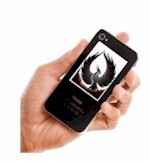|
|


IVR Solutions
This section of our technical library presents information and documentation relating to IVR Development and custom IVR software and products.
Business phone systems and toll free answering systems (generally 800 numbers and their equivalent) are very popular for service and sales organizations, allowing customers and prospects to call your organization anywhere in the country.
The PACER and Wizard IVR systems add another dimension to our call center phone systems and solutions.
What Is IVR?. An Interactive Voice Response (IVR) processes inbound phone calls, plays recorded messages including information extracted from databases and the internet, and potentially routes calls to either inhouse service agents or transfers the caller to an outside extension.
The following is an article relating to the IVR market including tips and best practices as well as product and answering service information.
CTI and IVR Extend To The virtual Call Center
Page 2
Telemarketing & Call Center Solutions
by Brater, Kenneth B
Adding The Internet To The Mix
Widespread use of the Internet is making PC access to information almost as prevalent as the telephone, and today's forward-thinking companies are jumping to offer customers services in this medium. Luckily, system integration and software solutions have evolved to make it easier for companies with IVR applications to offer them via the World Wide Web. Companies can now provide a Web "front end" that Web browsers can use to access IVR applications, and the information processing can still be run by the IVR system already in place. This allows companies to significantly reduce development time, new hardware costs and project expenses that would be required if their application had to be redesigned for each new medium.
Internet interactive service applications play the same role in call center management as IVR. Again, they offload tasks from personnel and the company reaps the same cost savings generated by IVR. Customers enjoy the benefits of working with a company at their convenience - 24 hours a day, 7 days a week. The visual/keyboard interface makes the interactivity more natural (input is no longer limited to 10 touch-tone choices), and applications can be expanded to take full advantage of this communication platform.
As an example, a computer peripherals manufacturer that currently offers order-entry services via the telephone using IVR technology can now offer those same services via the World Wide Web. Here, the customers, using their Web browser, visit the company's Web site and click on the "to place an order" icon. They then view, online, the company's product offerings to make their selections. The visual interface allows the manufacturer to provide more information and even photos to display its products. Customers then enter the item names or codes, quantities and any other information (size, color, etc.) into the online order-entry form. When the order is complete, the information is sent, via the Internet, from the customer's PC to the company's Web server.
Behind the scenes there is a software solution that provides an interface between the company's Web server and the IVR system. It passes that order data to the original IVR order-entry application. Here it is processed as it would be under normal telephone usage conditions -- databases are updated, fax confirmations are sent, etc.
Just as IVR cannot satisfy 100 percent of the user's needs, there will be cases where the user needs more information or interaction than is available from the Web site. This is where CTI enters the Internet arena. Web sites can include a "call me" function where the caller enters his or her phone number to tell the company, over the Internet, that they need a callback. This information is sent via the Internet to the company Web server and through a software link to the voice response system outdialing/CTI application.
The "call me" IVR/CTI application accepts the phone number, initiates an outcall and transfers it to an agent. Further, the application could pass any identification information (account number, order number, etc.) to the agent's PC for a true CTI application. However, in this case, the agent's computer pops the exact Web page and information the user is viewing.
CTI is a proven method for improving call center management, especially when coupled with an IVR system to offload routine calls. By providing agents with caller information before they receive the call, they are able to provide better, faster service - a benefit the company will experience at its bottom line. Now that the Internet is emerging as the next mass-communication vehicle, companies can take advantage of it to provide even better service than they could over the telephone. The advances in system and software integration tools are the key to quickly and cost-effectively implementing interactive voice response, interactive Web response and computer-telephony integration solutions.
Page
[1]
[2]
|



